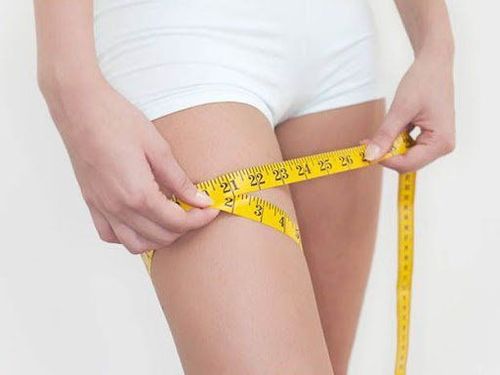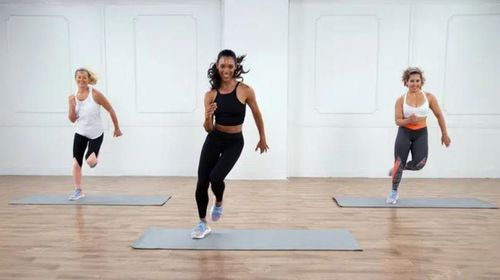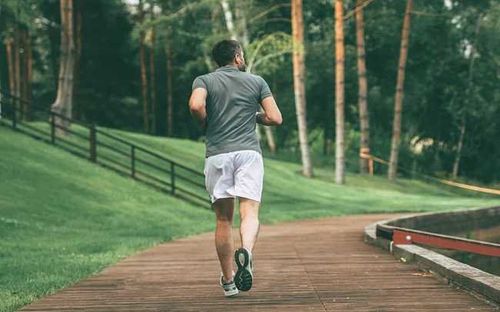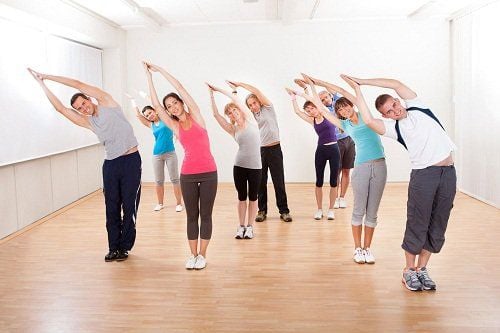This is an automatically translated article.
Cardio exercises are exercises related to the heart, this is not a specific exercise but a method of systematically combining many different exercises. Cardio exercises help the body increase control of heart rate, support blood circulation. In addition, cardio also helps cells burn excess fat in the body.
1.What is cardio exercise? Cardio is an acronym for Cardiovascular which means cardiovascular exercise. This is not a specific exercise but a systematic combination of many different exercises. Cardio exercises are aerobic exercise or endurance exercise, or any form of activity that uses aerobic metabolism. That is, during activity, oxygen participates in many cellular reactions to create the energy needed to maintain activity. Your heart rate will increase and breathing will be deeper to maximize the amount of oxygen in your blood, helping your body to use oxygen more efficiently, stay energized and not fatigued.
Cardio exercises are any vigorous activity that increases heart rate and respiration, increases oxygen and blood flow throughout the body, and uses the body's large muscle groups in repetition and rhythmic repetition. . Such activity gradually challenges the most important internal organs and improves the function and functioning of the heart, lungs and circulatory system. Cardio improves many aspects of health, including heart health, mental health, mood, sleep, weight regulation, and metabolism.
MORE: How many minutes a day should you do cardio to lose weight?
2. Why should you do cardio exercise? Cardio exercises use the large muscles of your body in motion for a continuous period of time, keeping the heart rate at a minimum of 50% of the maximum. With regular aerobic exercise, you'll have a stronger cardiovascular system, with more capillaries delivering more oxygen to the cells in your muscles. Besides, you will also increase your stamina and endurance with each training session.
Specific benefits of cardiovascular exercise include:
Improved cardiovascular health: When you engage in 30-60 minutes of cardiovascular exercise daily, you can build stronger muscles, including including heart muscle, helps control blood pressure, increases HDL (good cholesterol), reduces anxiety and stress, reduces protein and fat in the blood, contributes to preventing blood clots, prevents heart disease, reduces blood pressure blood sugar and control diabetes.

Người tập có thể cải thiện sức khỏe tim mạch nhờ các bài tập thể dục cardio
Boosts Brain Health: By doing regular cardio, the areas of the brain that control memory and thinking skills will grow in volume or size. Besides, regular cardio activity also reduces the rate of brain shrinkage in the elderly, improving their cognitive function. In addition, exercise can also help you get a good night's sleep, which is essential for mental health. Increases Metabolism Rate: All types of cardiovascular increase metabolism through the production of the hormone Fibroblast Growth Factor 21 (FGF21), which increases the body's metabolism, suppresses appetite and burn more calories. Weight regulation: Cardio helps burn excess calories and control weight. Exercises like walking, swimming, running, and jogging burn excess calories over time, while moderate to high intensity cardio burns quite a few calories per session. Examples of cardiovascular exercises that are highly effective for weight loss include jumping rope, stair running, walking, rowing, cycling, and high-intensity interval training (HIIT). Improves mood and energy: Cardiovascular exercise triggers an increase in the release of endorphins - neurochemicals that cause feelings of euphoria. Cardio also increases the production of mood-boosting hormones such as dopamine, serotonin, and norepinephrine. With an improved mood, you feel more energized and ready to complete your daily activities. But the increased release of hormones also reduces stress, boosts stamina, boosts energy, and improves memory and mental focus. Stronger Immune System: Regular exercise increases the release of antibodies and white blood cells, which improve the body's ability to fight infections. The release of FGF21 also speeds up metabolism and strengthens the immune system. In fact, cardio protects against a number of diseases, including high blood pressure, stroke, osteoporosis, diabetes, and heart disease. Manage Arthritis: Exercise helps relieve arthritis pain and reduces stiffness through movement. SEE ALSO: Should I do cardio every day and how much time is enough?
3. How are Cardio exercises designed?
3.1 Key Cardio Exercises In general, cardiovascular exercise can be classified into three categories - high impact cardio, low impact cardio and non-impact cardio. Specifically:
High Impact Cardio: Any cardiovascular activity that involves lifting both feet off the ground at some point during the activity is called high impact cardio. It's also called a weight-bearing exercise, because you're supporting your own body weight with your arms and legs against the force of gravity. Examples include jumping rope, high-impact aerobic dancing, and some forms of advanced strength training.
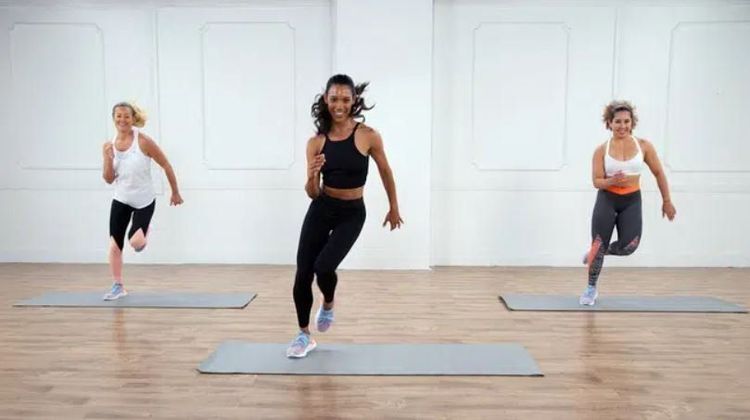
Nhảy aerobic là một trong các bài tập Cardio tác động cao
Low Impact Cardio: Any cardiovascular activity with one foot on the ground at all times. However, exercisers should not confuse low-intensity cardio with high-intensity cardio because many types of low-impact activity are high-intensity. Low-impact cardio is still a good and weight-tolerant exercise for maintaining healthy bones and conditioning the lungs and heart. Examples of low-impact cardio include walking, hiking, and low-impact aerobic dancing. Non-impact cardio: When cardio is done in water, the activity is classified as non-impact because immersion in water reduces the pull of gravity on the body. So swimming and water aerobics are activities that do not affect the heart. Cycling is also a low-impact cardio exercise, as the bike's tires and frame support most of the body's weight. Non-impact cardio exercises like cycling and water exercise are ideal if you have joint disease or are recovering from an injury. 3.2 How to do cardio to get high efficiency? For maximum benefits, you'll need to engage in cardiovascular activity at least three days per week. It is not necessary to practice with a large amount of time. With cardio, short sets (5 minutes each) are just as effective as longer sets, provided the intensity level and the total duration of the workout are equal. For example, 12 5-minute bursts of high-intensity cardio is just as effective as a 60-minute workout. If you're worried about your hectic schedule, cardio is a great option. You also don't need special equipment or a gym membership to do a lot of aerobic exercise.
For beginners, caution should be exercised when starting with low to moderate intensity activities, such as walking, cycling, swimming, dancing, jogging, martial arts, skating ice, canoeing, golf, and water aerobics. This will allow you to do them in the long run and reap more health benefits. But when you choose your activities, choose ones that you love so you can stick around and work harder.
In fact, it is better to increase intensity over time than to increase the volume or length of an activity. You should not overdo Cardio exercises and spend hours at a low to medium speed, as it will not give you any further benefits. So, after you can do 30-45 minutes of activity 3-4 times a week, you should gradually increase the level of exercise.
Basic guidelines for successful cardiovascular fitness include:
Warm-up: Start with a simple warm-up. For example, start with a 5-minute walk in the morning, then a 5-minute walk in the evening. Then, gradually add a few minutes and gradually increase the speed over time. When getting started, make sure to consider activities that interest you and that you will undertake without financial or time constraints. Possible options include hiking, jogging, cycling, rowing, jogging, etc. Warm up: At the beginning of each workout, take 5-10 minutes to gradually restore the cardiovascular system. and improve blood flow to the muscles. Warming up means you engage in lower intensity versions of the exercise you intend to do. For example, if you are going to go for a brisk walk, you can warm up with a slow walk. Conditioning: Move at your own pace, making sure you can do it for at least 30 minutes a day. In fact, for cardio to be beneficial, you need to develop your aerobic capacity by increasing your heart rate, breathing depth, and muscle endurance to the point where you can comfortably perform the exercise. at least 30 minutes. Cool down: At the end of each workout, take 5-10 minutes to cool down. You can cool down by stretching your calves, upper thighs (quadriceps), lower back, hamstrings, and chest. This post-workout stretch will conveniently get your muscles, lungs, and heart rate back to normal.

Các động tác giãn cơ sau khi tập luyện rất cần thiết cho mỗi người tập
In a nutshell, cardio exercises are aerobics or endurance exercises. This is a systematic combination of many different exercises. Cardio exercises help the body increase control of heart rate, support blood circulation. In addition, cardio also helps the body's cells to burn excess fat.
Please dial HOTLINE for more information or register for an appointment HERE. Download MyVinmec app to make appointments faster and to manage your bookings easily.
Reference source: fyzical.com




